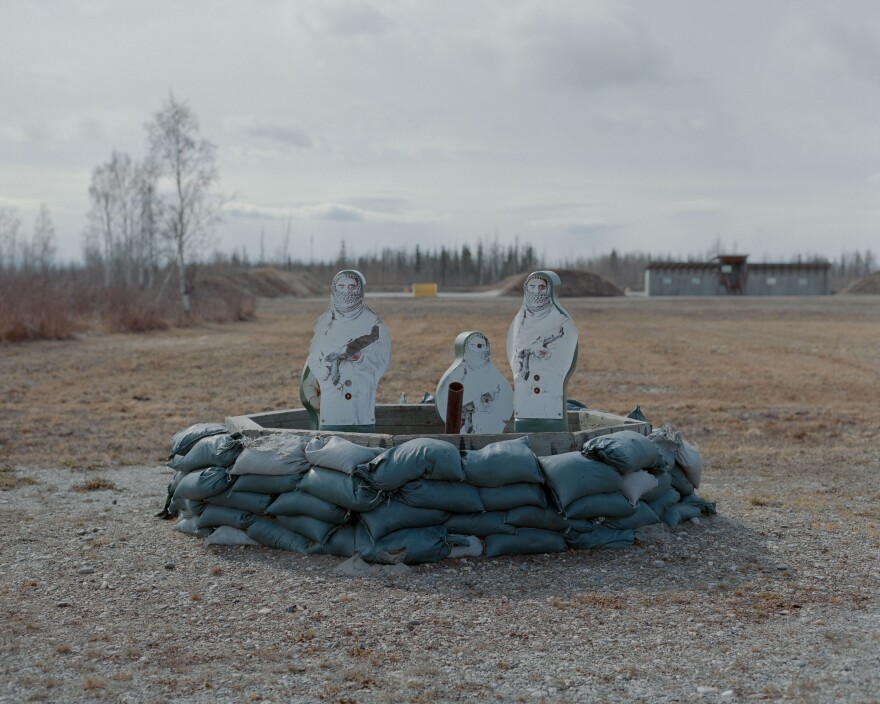The United States Army’s 11th Airborne Division – based between Anchorage and Fairbanks – is considered to be the nation’s specialist in Arctic warfare.

Command Sgt. Maj. Joe Gaskin is a senior leader in the 1st Brigade, which is housed at Fort Wainwright in Fairbanks, Alaska.
“If you go to the lower 48, across units you'll hear nothing but negatives about Alaska. Everybody's killing themselves everywhere, it's terrible, it’s cold, it’s dark,” said Gaskin. “So I did have some trepidation coming here.”
For those who aren’t adapted to the cold climate, military service in Alaska can be uniquely challenging. “You get in here and you see, ‘Well guess what, it’s not that bad, we just have to do a little something different,’” Gaskin said.
In 2021, the year before Gaskin’s arrival, the 11th Airborne had 17 suicide deaths, giving it one of the highest rates among military units nationwide.
“I think about it every day, every time my phone rings I have heart palpitations," Gaskin said. “You get a phone call in the middle of the night, I’m like, ‘My god.’ We’re devastated every time these things happen.”

In 2022, Congress directed then-Secretary of Defense Lloyd Austin to form a special committee to investigate the military’s approaches to suicide prevention. New leadership came into the 11th Airborne, and Alaska Sens. Lisa Murkowski and Dan Sullivan secured funds through Congress to try and address the problem.
This laid the groundwork for a partnership with the University of Alaska Fairbanks (UAF) – located just down the road from Fort Wainwright – to try and replicate the successes of their community-based suicide prevention model in Alaska Native villages on the state’s military installations.
“All they were doing was taking them back to doing hard things, subsistence living, and all those things that provide purpose to the Native community,” said Gaskin. “Well, those same things apply in our formation.”

The team from UAF brought retired officers on to help develop a new program tailor-made for the military’s culture. They invested in building the division’s identity around its Arctic environment through activities like polar plunges. The goal of these activities is to help soldiers connect with their peers and leaders, and to build a sense of shared purpose.



“Why did I come in the Army? What is my purpose? Is being part of the 11th Airborne Division, does that make me special in some way?” asks Gaskin. “And when people can hitch their wagon to that, all those negatives start to melt away.”
During a community outing last year at a folk school in Fairbanks, soldiers learned to smoke salmon while volunteer leaders encouraged the privates to get to know one another.
"Why did y'all join the Army?" an officer asked the assembled group.
"Mostly because of family, and to expand my reach as well," one of the soldiers replied.
"To become a stronger person, mentally," said another.

Gaskin said that he thinks the efforts to deepen connections within the division are making a difference.
“I lose sleep every night thinking about these kids that, you know, we've lost along the way. And I think about each and every one of them, I think about their parents, their families,” Gaskin said. “I don't know what I would do if it happened to me. I'm tearing up thinking about it.”

He paused before continuing: “We’ve got to protect what's left.”
UAF’s Center for Alaska Native Health Research (CANHR) has already expanded its study to include other military branches like the U.S. Coast Guard and the National Guard. This dovetails with a national shift toward suicide prevention approaches that try to build up a community’s protective qualities.
In the latest iteration of the National Suicide Prevention Strategy published by the U.S. Department of Health and Human Services in April 2024, community-based suicide prevention was designated as the top strategic priority.
Holly Wilcox is a national suicide prevention researcher and a professor at Johns Hopkins University. She said that the federal government’s emphasis on community prevention feels like the signal of a new paradigm.
“I actually think it’s been long overdue,” Wilcox said. “We really need to be focusing more upstream, community-based, on a public health approach to this major and leading cause of death.”
Wilcox wants to see more groups around the country seize the opportunity to deliver programs that follow this approach. With the increased attention and funding from the federal government, she’s feeling more hopeful that they might.
This story is part of a series from KYUK focused on community-based suicide prevention. Find the rest of the series at KYUK.org. Support for this reporting was provided by Stanford University’s Bill Lane Center for the American West.
If you or someone you know may be considering suicide or is in crisis, call or text 988 to reach the Suicide and Crisis Lifeline.


